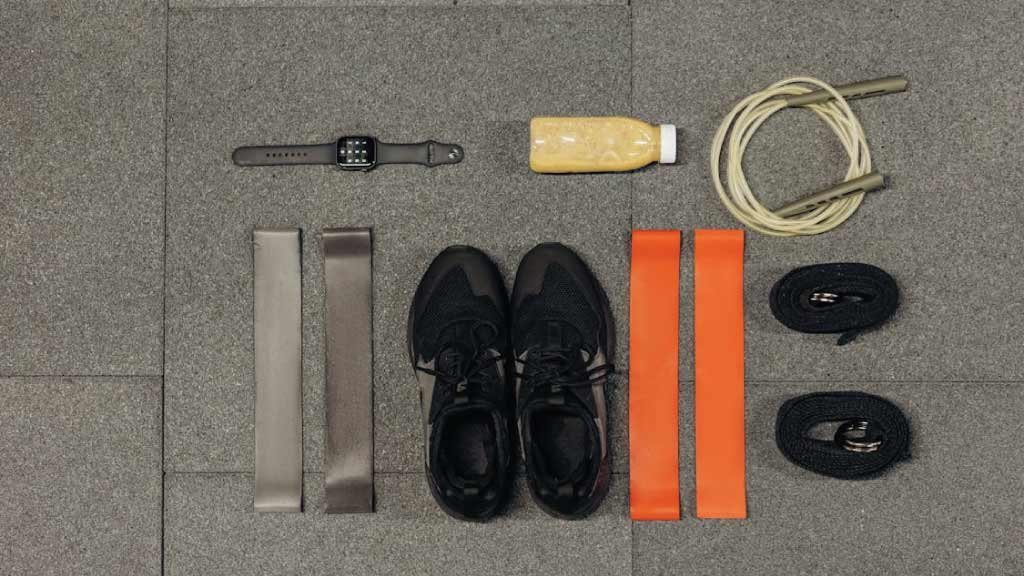Welcome to the 28-Day Workout Challenge! Whether you are a beginner or senior, man or woman, this plan is perfect for you. This challenge is designed to help kickstart your fitness journey, build strength, and improve your overall health. Follow this plan diligently for the next four weeks, and you will be amazed at the progress you can make. Remember to consult with a healthcare professional before starting any new exercise program, especially if you have any pre-existing medical conditions.
Why a 28-Day Workout Challenge?
The idea behind a 28-day workout challenge is to provide a structured and achievable plan that individuals can follow to jumpstart their fitness journey. Four weeks may seem like a short timeframe, but it’s long enough to establish healthy habits, see noticeable improvements in strength and endurance, and lay the foundation for long-term fitness success.
Benefits of the 28-Day Workout Challenge
Improved Fitness Levels:
Participating in the 28-Day Workout Challenge offers a structured approach to enhancing overall fitness levels. By adhering to a well-rounded workout plan that addresses various aspects of fitness, individuals can experience noticeable improvements in their physical capabilities and endurance.
Increased Strength and Muscle Tone:
The challenge incorporates a diverse range of strength training exercises, strategically targeting major muscle groups throughout the body. Through consistent participation, participants can expect to witness significant improvements in their strength levels, resulting in enhanced muscle definition and tone. Exercises such as squats, lunges, push-ups, and weightlifting promote muscle growth and development, contributing to a more sculpted physique.
Enhanced Cardiovascular Health:
Cardiovascular exercises play a crucial role in improving heart health and boosting endurance. Activities like jogging, brisk walking, and high-intensity interval training (HIIT) sessions elevate heart rate and stimulate circulation, thereby strengthening the heart muscle and enhancing overall cardiovascular function. Engaging in regular cardiovascular exercise not only burns calories and aids in weight management but also reduces the risk of heart disease and improves overall fitness levels.
Boosted Metabolism:
The combination of cardiovascular exercise and strength training in the 28-Day Workout Challenge can have a significant impact on metabolism. Regular physical activity increases the body’s energy expenditure, leading to a higher metabolic rate. Strength training, in particular, promotes the development of lean muscle mass, which requires more energy to maintain, resulting in a continuous calorie burn even at rest. As a result, participants may experience improvements in metabolic efficiency, facilitating weight management and overall health.
Mental Well-being:
Exercise is not only beneficial for physical health but also plays a crucial role in promoting mental well-being. The release of endorphins during exercise helps alleviate stress, anxiety, and depression, leading to an overall improvement in mood and emotional resilience. By incorporating regular exercise into their routine, participants of the 28-Day Workout Challenge can experience heightened feelings of positivity, reduced levels of stress, and an enhanced sense of well-being. Additionally, the sense of accomplishment and self-confidence gained through completing challenging workouts can further contribute to mental wellness and self-esteem.
How to Follow the 28-Day Workout Challenge
Day 1: Foundation Day
- Morning: 20-minute brisk walk or jog to warm up.
- Strength Training:
- Squats: 3 sets of 12 reps.
- Lunges: 3 sets of 12 reps (each leg).
- Push-ups: 3 sets of 12 reps.
- Planks: Hold for 30 seconds, repeat 3 times.
- Cool down with 5 minutes of stretching.
Day 2: Cardio Blast
- Cardio Focus:
- 5-minute warm-up jog.
- HIIT Intervals:
- 30 seconds sprinting.
- 1 minute walking.
- Repeat for 15 minutes.
- 10-minute cool-down walk.
- Stretch major muscle groups for 10 minutes.
Day 3: Active Recovery
- Low-Intensity Activities:
- Yoga or stretching for 30 minutes.
- Gentle swimming for 20 minutes.
- Focus on deep breathing and relaxation techniques.
Day 4: Core Strength
- Core Workout:
- Crunches: 3 sets of 15 reps.
- Leg Raises: 3 sets of 15 reps.
- Russian Twists: 3 sets of 20 reps.
- Bicycle Crunches: 3 sets of 15 reps (each side).
- Cool down with yoga poses targeting core muscles.
Day 5: Upper Body Focus
- Upper Body Strength:
- Bicep Curls: 3 sets of 12 reps.
- Tricep Dips: 3 sets of 12 reps.
- Push-ups: 3 sets of 12 reps.
- Rows: 3 sets of 12 reps.
- Finish with 5 minutes of shoulder and arm stretches.
Day 6: Active Rest Day
- Light activities such as walking, gardening, or leisurely cycling for 30-45 minutes.
- Focus on mobility exercises and gentle stretching.
Day 7: Long-Duration Cardio
- Endurance Challenge:
- Run, cycle, or swim for 45-60 minutes at a steady pace.
- Follow with 10 minutes of gentle yoga for recovery.
Day 8: HIIT Intensity
- High-Intensity Interval Training:
- 5-minute warm-up.
- 30 seconds of burpees.
- 30 seconds rest.
- Repeat for 15 minutes.
- 5-minute cool-down jog.
- Stretch major muscle groups for 10 minutes.
Day 9: Lower Body Focus
- Lower Body Strength:
- Deadlifts: 3 sets of 10 reps.
- Leg Presses: 3 sets of 10 reps.
- Calf Raises: 3 sets of 15 reps.
- Bridges: 3 sets of 12 reps.
- Finish with 5 minutes of hamstring and quadriceps stretches.
Day 10: Plyometrics Day
- Explosive Movements:
- Jump Squats: 3 sets of 15 reps.
- Box Jumps: 3 sets of 10 reps.
- Plyo Push-ups: 3 sets of 10 reps.
- Cool down with gentle jumping jacks and stretching.
Staying Consistent:
Consistency serves as the cornerstone of success in any fitness journey. It’s essential to establish a regular exercise routine and stick to it, regardless of any obstacles or distractions that may arise. Treat your workout schedule with the same level of commitment as other important appointments or responsibilities in your life. By making exercise a non-negotiable part of your daily or weekly routine, you’ll gradually build momentum and see significant progress over time.
Listening to Your Body:
One of the most important aspects of any fitness regimen is learning to listen to your body’s signals. Pay attention to how you feel during and after workouts, and be mindful of any signs of fatigue, discomfort, or pain. It’s crucial to strike a balance between pushing yourself to challenge your limits and knowing when to dial back the intensity to prevent injury or burnout. Remember that rest and recovery are just as vital as the workouts themselves in promoting overall health and performance.
Fueling Your Body:
Nutrition plays a pivotal role in supporting your fitness goals and maximizing the benefits of your workouts. Aim to consume a balanced diet comprising lean proteins, complex carbohydrates, healthy fats, and plenty of fruits and vegetables. These nutrient-dense foods provide the energy and essential nutrients your body needs to perform optimally during exercise and facilitate muscle recovery and repair afterward. Prioritize pre-workout fueling with a combination of carbohydrates and protein to sustain energy levels and post-workout refueling to replenish glycogen stores and support muscle recovery.
Staying Hydrated:
Proper hydration is essential for maintaining performance, regulating body temperature, and supporting overall health. Drink an adequate amount of water throughout the day, both before and after exercise, to stay hydrated and optimize your workout performance. Hydration needs may vary depending on factors such as exercise intensity, duration, and environmental conditions, so it’s essential to listen to your body’s thirst cues and drink water accordingly. Aim to consume at least 8-10 glasses of water daily, and adjust your intake as needed based on individual factors and activity levels.
Tracking Your Progress:
Tracking your progress is a valuable tool for monitoring your fitness journey, staying motivated, and identifying areas for improvement. Keep a workout journal or use a fitness tracking app to record details such as exercises performed, sets and reps completed, weights lifted, and any notes on how you felt during the workout. Tracking your progress allows you to see tangible improvements over time, celebrate milestones, and make informed adjustments to your workout routine as needed. Additionally, sharing your progress with a friend, trainer, or online community can provide accountability and support along the way.
Incorporating these tips into your fitness routine can help set you up for success and maximize your results. Remember that achieving your fitness goals is a journey that requires dedication, patience, and consistency. By staying committed to your workouts, listening to your body, fueling properly, staying hydrated, and tracking your progress, you will be well on your way to achieving the healthier, stronger, and more vibrant version of yourself.
Related Posts:
Push Day Workout Routine Guide
10 Best Fitness Challenge Ideas at Home
High Intensity Interval Training Workouts
Conclusion
The 28-Day Workout Challenge offers a structured and effective way to jumpstart your fitness journey, improve your strength, endurance, and overall health in just four weeks. By following the carefully designed workout plan, staying consistent, and pushing yourself to new limits, you can achieve remarkable results and set yourself on the path to a healthier, stronger, and more confident you. So, are you ready to take on the challenge and transform your body in 28 days? Let’s do this!

